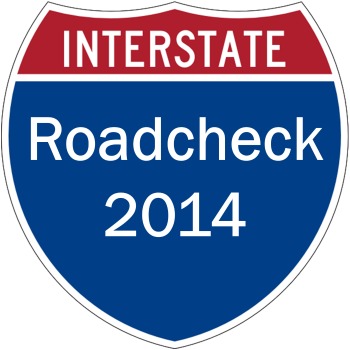 DON JERRELL
DON JERRELL
Associate Vice President
It's time again for the annual roadside inspection blitz!
International Roadcheck 2014, sponsored by the Commercial Vehicle Safety Alliance, is booked for June 3-5. The checks primarily will include North American Standard Level 1 inspections — the most thorough inspections of a truck driver and vehicle.
Roadcheck 2014 is a way of showing the transportation industry's commitment to safety. Since 1988, over 1 million inspections have been executed as part of this annual safety event. CVSA estimates that the blitz has saved over 220 lives and avoided 4,045 injuries.
What Drivers Can Expect During a Roadside Inspection
According to CVSA, drivers will be asked to provide their license, endorsements, medical card, and hours of service documentation. Drivers also will be checked for seat belt usage and for use of alcohol and controlled substances.
The vehicle inspection will include a check of the:
- braking system
- coupling devices
- exhaust system
- frame
- fuel system
- lights
- safe loading
- steering mechanism
- suspension
- tires
- van and open-top trailer bodies
- wheels and rims
- windshield wipers
- emergency exits (on buses)
There's a special focus this year on hazardous materials. Drivers transporting dangerous goods should take extra care to pass a roadside inspection, including making sure all special paperwork is in order and the load is properly secured.
[To further educate motor carriers involved in hazmat transportation, CVSA is promoting its Cooperative Hazardous Materials Enforcement program during the inspection blitz this year. Click here for information about the COHMED program.]
Get Your Drivers Ready for a Roadside Inspection
Here are some best practices to make sure your drivers' truck inspections go as smoothly as possible:
- Pre-inspect the vehicle, including checking the load and mirrors.
- Minimize driving distractions, including phone use and a loud radio.
- Keep the logbook current and neat. Inspectors want to see the last seven days of activity.
- Inspectors will want to check out a CDL, medical cards, trailer registration, and documents in a permit book. Make sure all paperwork is accurate and current.
- Remember that bad tires could trigger a more thorough inspection. And if a Level 1 inspection is completed, get a sticker for it.
- Avoid lapses in attention and poor judgment by getting enough rest. Sleep deprivation is a threat to safe driving.
- No attitude, please. A driver's best behavior during an inspection is always professional and courteous.
- Clue in your drivers on the most common violations: brakes out of adjustment, other brake problems, lights, tires and wheels, and cargo load securement. Other areas worth review include: coupling devices; fuel and exhaust systems; frame, van, and open-top trailers; steering; suspension; and rims and hubs.
All inspection violations become part of the CSA/SMS record.
Have any inspection tips to add? Please sound off in comments!
Related Posts:
How to Get a Copy of a Roadside Inspection Report
Top 4 Lessons from Vehicle Maintenance Workshop
Understanding Roadside Violations: The Key to Motor Carriers' Legal Defense
To DataQ or Not to DataQ...That is the Question
.png?width=69&height=53&name=Acrisure%20Logo%20(White%20Horizontal).png)

 DON JERRELL
DON JERRELL
